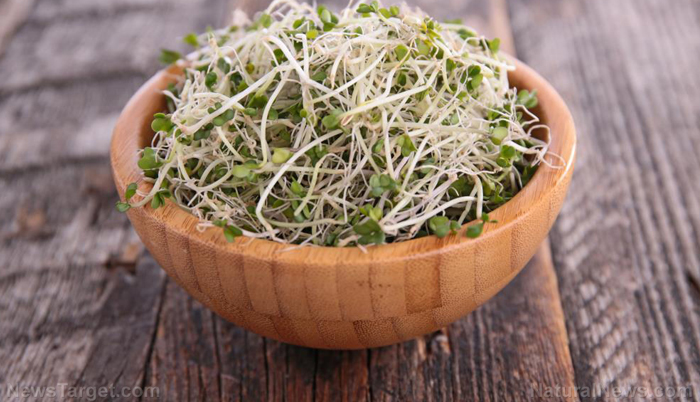![]() Home > Health
Home > Health
Study: Broccoli And Kale Microgreens Are Nutritious Superfoods, But Their Phytonutrient Levels Vary Depending On Growth Conditions

News Target | Natural News
![]() March 10th, 2023 | 17:58 PM |
March 10th, 2023 | 17:58 PM | ![]() 330 views
330 views
NATURALNEWS
Microgreens are used as gourmet ingredients in upscale restaurants, but dishes from these places are often more expensive compared to meals made with common ingredients. To save money, gardeners and home cooks have learned how to grow microgreens at home.
But despite their “superfood” label, the levels of healthful compounds like phytonutrients in most varieties of microgreens are unknown. To address this, scientists conducted a study about these small but nutrient-rich superfoods.
Their findings show that kale and broccoli microgreens grown on either windowsills or under commercial growing conditions are full of phytonutrients, but the levels of some compounds may vary “considerably” between the two different environments.
Details of the study were published in the journal ACS Food Science & Technology.
A closer look at the compounds in microgreens
Many health enthusiasts have started growing different microgreens on their windowsills.
Some of the most commonly planted varieties of these small seedlings are from the Brassica family, which includes vegetables like broccoli, cabbage, kale and mustard.
The mature, fully-grown versions of these vegetables are full of vitamins, minerals and phytochemicals. According to the study, environmental conditions can impact the plants’ nutritional contents.
However, not much is known about the levels of these compounds in young microgreens.
In a previous study, Pei Chen, Thomas Wang and colleagues discovered that red cabbage microgreens had higher amounts of phytonutrients that have antioxidant and anticancer properties compared to full-grown vegetables.
But similar assessments haven’t been done on other Brassica seedlings.
In a recent study, scientists set out to measure the levels of polyphenols and glucosinolates in broccoli and kale microgreens. They then compared data from those grown on windowsills to those grown in commercial growth chambers.
To observe the differences, scientists placed trays of newly planted broccoli and kale seeds either on a windowsill in natural sunlight or inside a temperature- and humidity-controlled, refrigerator-like growth chamber with artificial sunlight for 12 hours a day.
Following 10 full days after seeding, the researchers harvested the plants and measured the phytonutrient content using a liquid chromatography high-resolution mass spectrometry system. The data showed that the broccoli and kale microgreens were rich in polyphenols and glucosinolates regardless of how they were grown.
The research team also found that there was considerable variability in the amounts of individual compounds when comparing the two growth environments. To illustrate, three flavanol compounds that contribute to the plant’s dark color and bitter taste were higher in windowsill-grown microgreens.
On the other hand, chamber-grown plants had higher levels of two glucosinolates, which are antioxidant- and anticancer-related compounds.
The researchers found that, overall, the growth environment for kale and broccoli microgreens affects the abundance of individual phytonutrients and this could affect their flavor and potential health benefits.
Healthy ways to incorporate microgreens into your diet
Whether you buy microgreens from the nearest health food store or grow them in your own kitchen, here are some healthy ways to use them for everyday meals:
Add a handful of microgreens to your morning green smoothie.
Juice microgreens with your preferred fruits or vegetables.
Eat microgreens raw by adding them to salads.
Give soups a delicious nutrient boost by adding microgreens.
Make pesto with microgreens.
Layer a handful of your favorite microgreens between two slices of bread, then add healthy toppings like roasted vegetables, cheese and roasted chicken.
Top stir fries with microgreens.
Make nutrient-dense omelets by adding vegetables and microgreens.
Source:
courtesy of NATURALNEWS
by Zoey Sky
If you have any stories or news that you would like to share with the global online community, please feel free to share it with us by contacting us directly at [email protected]